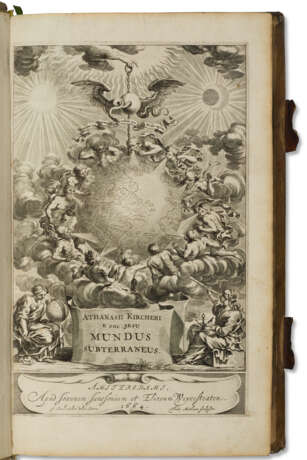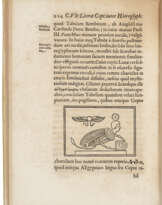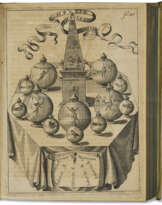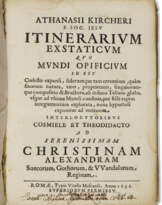ID 1032722
Lot 70 | Mundus subterraneus
Valeur estimée
$ 15 000 – 25 000
A large, fine, and crisp copy of the first edition, first issue, of Kircher’s geo-cosmogonic masterpiece—a paragon of Baroque scientific book illustration. This work is the fruition of an obsession that began when Kircher visited Sicily in 1637-8, witnessing the eruptions of Etna and Stromboli and then famously having himself lowered into the crater of Vesuvius to observe more closely the interior operations of the volcano. "The Mundus subterraneus was a work designed to rival the Oedipus in its claims for universal erudition. It unlocked nature's hieroglyph by explaining the system of the earth that produced a wide variety of compelling natural phenomena, from erupting volcanos to the most puzzling fossils … most importantly, it described natural in the broadest geographic sense, building on the kind of data that had made the Magnes an equally impressive example of Jesuit empiricism at work" (Findlan).
This kaleidoscopic work ranges from the deepest interiors of the earth to the forces which govern heavenly bodies, addressing the topics like distillation and alchemy, hydraulics, fossils, and meteorology (to name only a few). The splendid double-page plates, particularly of the chambers of fire and water within the earth, are some of the most memorable scientific book illustrations created in the 17th century. There are several hundred other engraved plates and woodcuts in the text, including three volvelles—some original but others derived from the works of Aldrovandi, Imperato, Mercati, and others on their own cabinets of wonders.
The two portraits depict the author and the dedicatee, Pope Alexander VII. They and the engraved titles were drawn by Johann Paul Schor (1615-1674), an Austrian artist who worked in Rome for Alexander VII and as an assistant to Bernini; he was responsible for much of the decorations in rooms in the Vatican, the Palazzo Borghese, the Palazzo del Quirinale, and the Palazzo Colonna. These plates were engraved by Theodor Mathem (1589-1676), a Dutch engraver who lived in Rome and studied there under his compatriot Cornelius Bloemaert.
This is the first issue, with engraved titles dated 1664 and a single letterpress title to vol 1 dated 1665. The inserted leaf of Privilege for the Dutch States is normally not present as most copies were distributed outside The Netherlands. Jansson had received the exclusive right to print Kircher's works in 1661, and his broad distribution network helped transmit the polymathic Jesuit's ideas across Europe, including the Protestant world (and even in the Americas). Hoover Collection 483; Merrill 17; Nissen ZBI 2196; Sommervogel IV 1060 21; Wellcome III p. 395. See Paul Findlan, "The Last Man Who Knew Everything … or Did He?" in Athanasius Kircher: The Last Man Who Knew Everything (2004).
Two volumes in one, folio (402 x 235mm). Inserted leaf of Privilege for the Dutch State. Engraved additional title and letterpress title with engraved vignette in vol 1, engraved title to vol 2; 2 engraved portraits; 21 engraved plates, 11 double-page or folding, 8 full-page, and 2 smaller engravings; 7 folding tables; numerous engravings and woodcut illustrations in the text; 3 volvelles (Vesuvius plate with two clean tears repaired without loss, a few minor stains, faint marginal dampstain in vol 2, one table just shaved at lower edge, a few small tears). Contemporary Dutch vellum over bevelled wooden boards, with blindstamped cartouches and panels with corner acorns on both sides, remains of brass clasps (spine with splits at top and bottom). Provenance: a few early pencil marginal annotations, mostly in the second vol – Dr. C. Depuydt (bookplate with a presentation inscription dated May 22 1966).
| Artiste: | Athanasius Kircher (1602 - 1680) |
|---|
| Artiste: | Athanasius Kircher (1602 - 1680) |
|---|
| Adresse de l'enchère |
CHRISTIE'S 20 Rockefeller Plaza 10020 New York Etats-Unis | ||||||||||||||
|---|---|---|---|---|---|---|---|---|---|---|---|---|---|---|---|
| Aperçu |
| ||||||||||||||
| Téléphone | +1 212 636 2000 | ||||||||||||||
| Fax | +1 212 636 4930 | ||||||||||||||
| Conditions d'utilisation | Conditions d'utilisation | ||||||||||||||
| transport |
Service postal Service de messagerie ramassage par vous-même | ||||||||||||||
| Modes de paiement |
Virement bancaire | ||||||||||||||
| Heures d'ouverture | Heures d'ouverture
|











